The world's most fascinating abandoned hotels
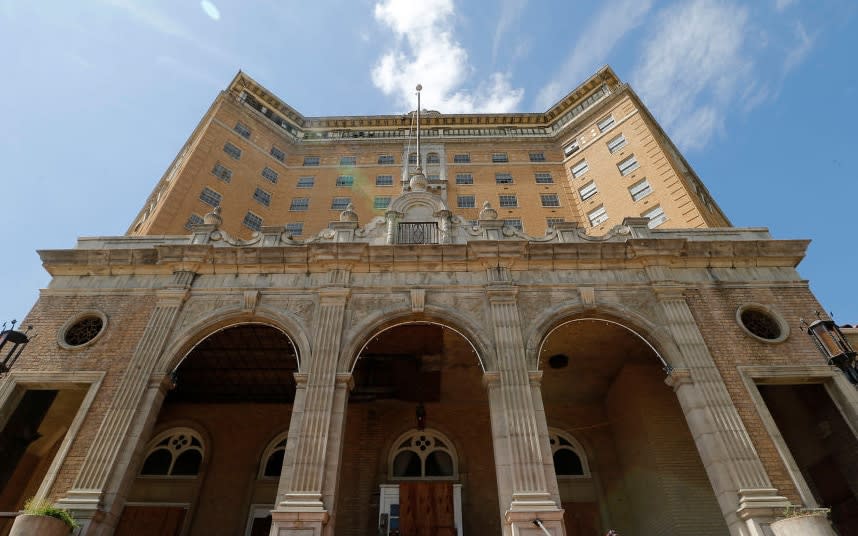
As anyone who has ever watched an episode of Scooby-Doo (the classic Seventies incarnation where the villains are corrupt bank managers, implausibly masquerading as monsters, rather than actual monsters, as was the silly idea with the Eighties reboot) will understand the appeal of an abandoned hotel. There is something about it which zings with lurid, ghoulish attraction - the shuttered property up on the hillside, inevitably silhouetted by the moon, perhaps a flash of lightning behind it for added shiver-factor.
It appeals to the part of us which is intrigued by ruin tourism. But it is also somehow more than that - a fallen angel whose story sings of good times and bad, of success and failure, or ambitions foundering on hard economic realities. Hotels which have shut down resemble exotic ghosts, echoing with the laughter of forgotten parties and long-ended wedding receptions, a warning to all that the happy moments cannot last forever.
The following hotels have all won and then lost at various stages in the last half-century - and all of them, crucially, are still standing, pitched like gravestones to the memories of their own existences. Some of them may yet reopen - but for now, they are all more interesting for their declines than for any future possibility of redemption.
The Baker Hotel
Where: Mineral Wells, Texas, USA
When did it close? 1963, pretty much, although it had brief reopenings until 1972.

Once upon a time: Mineral Wells is not a place that is well-known to anyone who lives outside Texas - it sits some 80 miles west of Dallas. But it has natural hot springs - and had enough of a tourist industry in the Twenties for plans for an elaborate hotel to be put in motion.. The Baker Hotel was the result, opening in 1929 and flourishing in the Thirties and Forties. At its peak, it accommodated film stars (Clark Gable, Judy Garland) and future presidents (Lyndon B Johnson). Legend has it that it once also hosted glamorous Depression-era bank robbers Bonnie (Parker) and Clyde (Barrow).
What killed it? Declining interest in Mineral Wells as a spa destination, and the declining enthusiasm of the owner, Earl Baker, who promised to close the hotel after his 70th birthday in 1963, and kept his promise. The elderly Baker would have a heart attack in the hotel in 1967 - and be found unconscious on the floor of the Baker Suite.
Hope for the future? There have been regular attempts to resuscitate the Baker Hotel since its closure, perhaps as a luxury health retreat - but as yet, none have succeeded.
Divine Lorraine Hotel
Where: Philadelphia, Pennsylvania, USA
When did it close? 1999
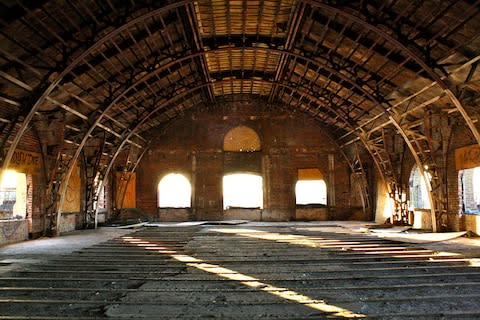
Once upon a time: Initially built as apartments between 1892 and 1894, this elegant 10-storey structure in North Philadelphia was transformed into the Lorraine Hotel in 1900, at a time when this part of Pennsylvania's biggest city was awash with money and upwardly-mobile residents. It was sold in 1948 to a preacher, Father Divine - who added his own name to the title, and turned it into America's first racially desegregated accommodation - a sanctuary where all guests, no matter their gender or ethnicity, were considered equal in the sight of God. The giant three-tier sign on the building's rooftop which identifies the property as the "Divine Lorraine Hotel" is still on display.
What killed it? Changing time. Divine's movement, the International Peace Museum, sold the property in 2000. Furnishings and any items of value were stripped out, and the structure was gradually lost to spiralling graffiti and smashed windows. It was bought again in 2006, when there were plans to convert it back into apartments - but these would fail to come to fruition. The building's continued existence was at least ensured in 2002, when it was added to America's National Register of Historic Places.
Hope for the future? Yes. As of 2015, there has been a renewed attempt to restore the building. Work is ongoing, but it may resurface as apartments either this year or next.

Holiday Inn
Where: Beirut, Lebanon
When did it close? 1975
Once upon a time: The ghastly icon of ruined hotels, this 26-storey magnet for well-to-do tourists was open for barely a year before it was consumed by conflict. It was built between 1971 and 1974 in an era when Beirut was a playground for wealthy tourists seeking Mediterranean sun. It had a revolving restaurant on its top floor, a nightclub on the 25th, and was a short hop from the beach in the Minet el Hosn area.
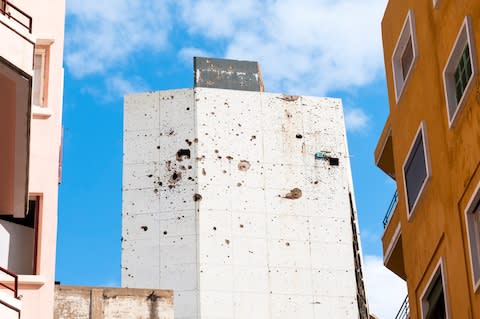
What killed it? The Lebanese Civil War, which erupted in 1975, and would keep Beirut in its clutches until 1990. The Holiday Inn was quickly torn apart, its high roof making it a coveted vantage point for rival militias, who would fight for it during the "Battle of the Hotels", and use it as a snipers' nest thereafter. Four years after it opened, the hotel was riddled with craters and artillery holes. As many as a thousand people are thought to have died in this phase of the war, some thrown from the Holiday Inn's roof.
Hope for the future? Not really. The Holiday Inn is a very literal tomsbtone, rearing over the next-door Phoenicia Hotel (which was also destroyed, but has been rebuilt). Aside from the obvious damage, it is mired in bureaucracy, co-owned by a Lebanese and a Kuwaiti company, who cannot agree on a way forward. In the Nineties, it was used as a venue for underground raves, but it's only logical future is surely demolition.
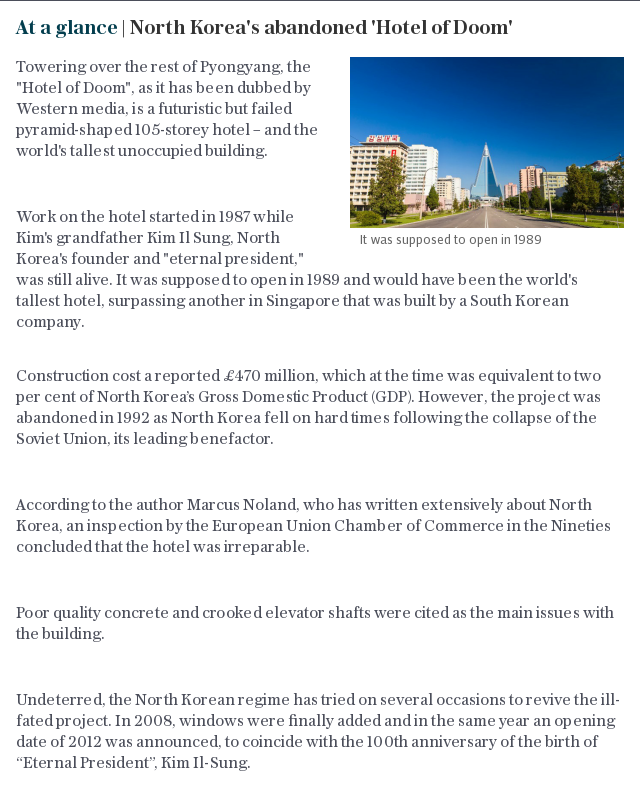
Castello Sammezzano
Where: Leccio, Tuscany, Italy
When did it close? 1990
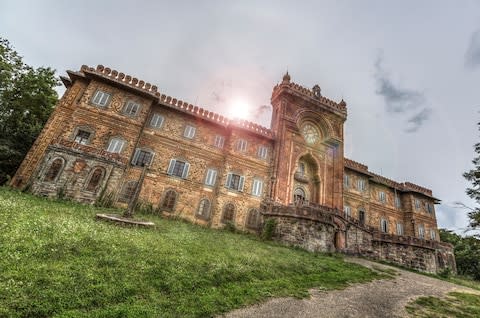
Once upon a time: Few hotels can boast as twisting and tragic a tale as this jewel, which sits marooned in the Tuscan countryside 17 miles south-east of Florence. Indeed, referring to it simply as a "hotel" rather underplays its history. It was originally erected in the early 17th century, then hugely transformed between 1853 and 1889 by the nobleman Ferdinand Panciatichi Ximenes, who transformed it into a "Moorish" palazzo more akin to the Alhambra in Granada than a medieval castle in central Italy. Its fine mosaics and Arabesque designs made for a wonderful hotel when Sammezzano opened as such in the Seventies, its 365 rooms ringing with the chatter of chic guests.
What killed it? Money. The number of paying customers could never keep up with the cost of maintenance. Since then it has existed in a vacuum, too precious to lose, to expensive to renovate to its full majesty. For much of this century, it was owned by an English-Italian company who had ambitions to restore it. As of 2012, there has been a fresh campaign to preserve it before it falls any further into ruin. See sammezzano.org.
Hope for the future? Hopefully. It would be an unforgiveable act of cultural neglect if the Castello Sammezzano were to slip completely into the past tense.
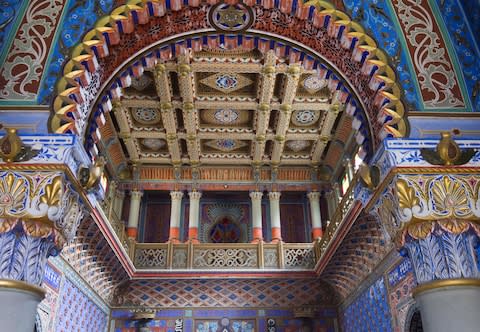
Grand Hotel San Pellegrino Terme
Where: San Pellegrino, Lombardy, Italy
When did it close? 1979
Once upon a time: Hugely famous, its name alive on the labels of the bottles of fizzy spring water it sends forth into the world, the Italian spa town of San Pellegrino, should be, you would expect, the sort of location which can sustain a palatial hotel. Alas, the Grand has been held in limbo for almost 40 years. It preens on the left bank of the River Brembo - as it has since 1904, when it opened as the fruit of the labours of feted architect Romolo Squadrelli and the engineer Luigi Mazzocchi. It had (and has) 250 rooms laced across seven storeys, and was fitted with the sort of lavish accoutrements that were generally slotted into fine hotels in the giddy years before the First World War. Margherita of Savoy, the Queen-consort of Italy, paid a visit in 1905.

What killed it? The usual slow creep of unappetising economic truths - failure to upgrade the hotel for modernising times, and the surging costs of keeping it open.
Hope for the future? It is too beautiful a structure to lose, but it requires an astronomical cash injection to bring it up to date while preserving its structure and spirit. And in the last four decades no-one has come up with a plan or suitable funding.
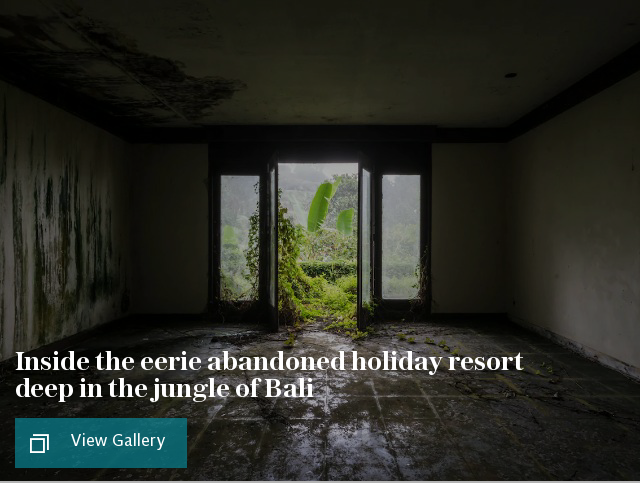
Hotel Narcis
Where: Strpce, Kosovo
When did it close? Mid-Noughties
Once upon a time: Some of the hotels in this feature used to be grand, dreaming piles of stately wonder. You probably can't say the same of the Hotel Narcis - a dreary slab of Communist-era accommodation which in the village of Strpce, just outside the ski resort of Brezovica. Nominally a four-star, it was more than fit for purpose in the calm Yugoslavian era, but reality has bitten since the region fractured in the early Nineties.
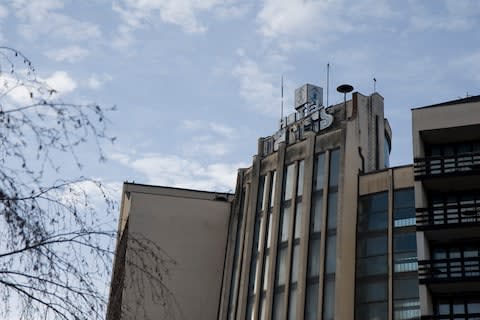
What killed it? Not so much the wars which devoured the Balkans from 1991 onward as the ongoing uncertainty about the status of Kosovo (much of the world, including the UK, regards it as an independent state; neighbouring Serbia does not). Tensions between ethnic Albanians and Serbians has seen each group boycott the other's businesses. Trade had been slow for Hotel Narcis long before it bolted the front door.
Hope for the future? Brezovica is still a functioning ski resort, so it is possible that the hotel will reemerge at some point. The question of "when" is impossible to answer.
Jerma Palace Hotel
Where: Marsaskala, Malta
When did it close? 2007
Once upon a time: Some hotels have a darker story than others. The Jerma Palace is probably one of those. Its seeds were sown in 1976, when the land it stands on was purchased by the Libyan Foreign Investment Company - an offshoot of the Gaddafi government across the Mediterraean in Tripoli. It opened in 1982, and, at first, did well - Colonel Gaddafi even had a presidential suite within the hotel for his personal use.
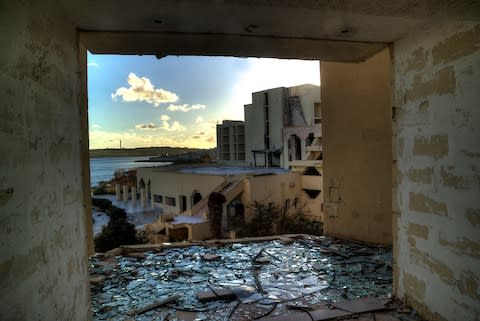
What killed it? Its location didn't help. Marsaskala sits at the south-east end of Malta's main island, somewhat removed from the main tourist areas of St Julian's and Sliema. With 345 rooms, the hotel struggled with under-occupancy. It has, though, reputedly had residents since it closed. In December 2015, there were reports that Libyan people traffickers were using the hotel as a drop-off point for migrants smuggled into the EU.
Hope for the future? None whatsoever. The hotel has crumbled since its closure. Parts of it have collapsed, anything with a resale value has been stolen, and rubbish has welled up in many of the rooms. In December of last year, a proposal to demolish it and construct a new property on the site was tentatively approved by the local council.
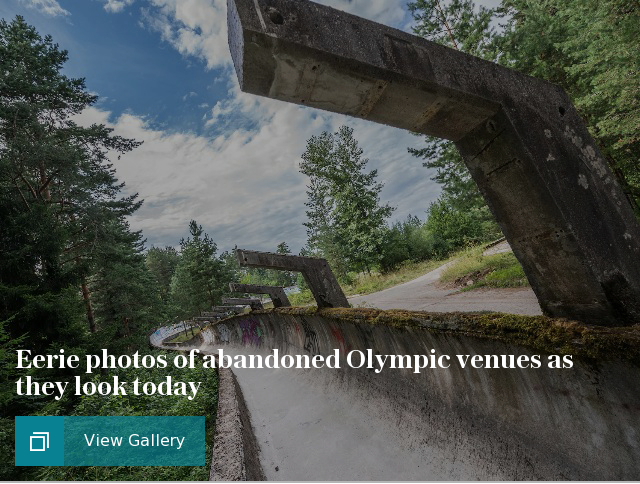
Hachijo Royal Hotel
Where: Hachijo-jima, Japan
When did it close? 2006
Once upon a time: The Sixties were a boom time for the Izu archipelago - volcanic outcrops which are strewn across the Philippine Sea south of Japan's main island Honshu. The country was in a pivotal period, recovering from the Second World War, and blessed with a new generation increasingly keen to travel further afield. These lava-born dots in the ocean came to be a halfway house - close to home, but still exotic. They were even promoted as the "Hawaii of Japan" - and Hachijo-jima, which lies around 200 miles south of Tokyo, was at the forefront of the rush to the beach. The Hachijo Royal Hotel appeared in 1963 as a hazy Baroque fantasy, all Greek-style statues in the garden and water fountains tinkling in salute to the sight of the rising sun.
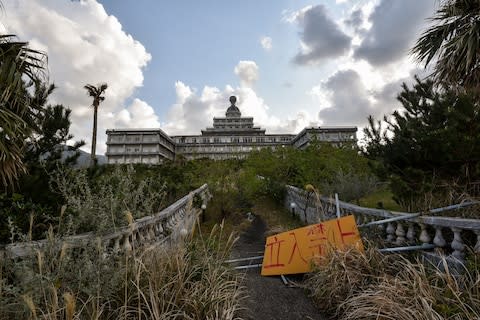
What killed it? Changing tastes. It was difficult for Japanese to travel abroad before the Sixties, but it soon became clear that the world was an oyster, and the horizon beckoned. The hotel limped on into the new century, but has been defunct for a decade.
Hope for the future? Possible, but unlikely. The island's lush vegetation has begun to reclaim the property, swamping its statues and dead swimming pool. Again, it would take enormous investment - and the market is no longer there to support such a move.
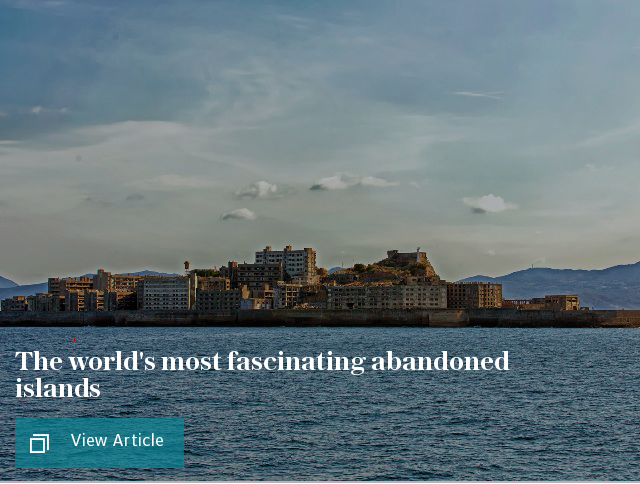
Hotel Claridge
Where: Outside Motilla del Palancar, Castilla-La Mancha, Spain
When did it close? 1999
Once upon a time: Not all abandoned hotels are flights of fancy which suffer an Icarus fate. The Hotel Claridge was a fabled workhorse of the Spanish road system, pitched roughly midway along the N111 highway where it links Madrid to Valencia. It opened in 1969, and looked the part - a slab of concrete Brutalism very much in synch with the unflinching outlook of Franco's Spain. It became a favourite stop-off point for coaches travelling from the capital to the country's third city - disgorging regular hordes of hungry passengers, who would eat quickly before jumping back on their bus.
What killed it? The construction of a swifter section of the A-3, immediately to the south, between Honrubia and Motilla del Palancar, which cut the Claridge from the coach route, and customers. As it was not a destination in itself, this was a death knell.
Hope for the future? None whatsoever. But it remains a hugely striking structure.


